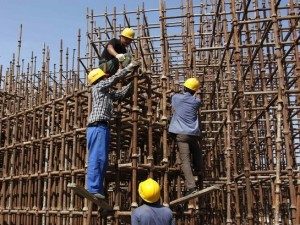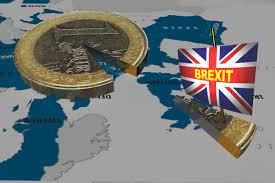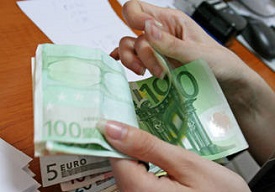
Productivity per employee in the economy – trade exceeds industry
According to data from the National Institute of Statistics from the Structural Survey on enterprises active in industry construction, trade and market services, trade activities

According to data from the National Institute of Statistics from the Structural Survey on enterprises active in industry construction, trade and market services, trade activities

The business equation that brought farmers out to the streets is the result of 2 years of turbulence that the lack of modernization of the

Salaries in domestic companies continue to grow as staff shortage widens, but remain half the level registered in foreign firms, according to an analysis by

Romania’s economy exceeded, at current prices in euros, Portugal’s economy in 2018, a country with a population and a surface two times smaller as Romania.

Hourly labour costs grew by 13.91% in the third quarter of 2018 compared to the same period in 2017 (+1.53% compared to Q2 2018), according

For four years now, net wage growth has been much higher than productivity and, as employers’ earnings have not increased with the wage advance disproportion

Wage increases should be based solely on productivity growth and be made „by market force”, not by politicians, the Governor of the National Bank of

Romania climbed last year on the penultimate position among the EU member states in terms of the productivity of resources in the economy, after Bulgaria,

The hourly labour cost increased in the first quarter of 2018 by 12.72% compared to the same period in 2017, according to the data announced

After it reached, two years ago, among top states that met most economic stability criteria imposed by the Macroeconomic Imbalances Procedure Scoreboard (MIPS), with 13

The ratio between the net revenues coming as direct investment in the country and the (chronically negative) current account of Romania’s balance of payments has

The degree of labour force professionalisation in Romania has declined so much that the Romanian economy is heading toward an acute crisis on the market,

Sacrificing investment in the budget execution of the first two months of the year brings the analysis of the „2017 Country Report – Romania”, issued

1 February 2017: an important day for the labour market. Increasing the national minimum wage from 1,250 lei to 1,450 lei will involve an annual increase

The exit of UK from the European Union, abbreviated Brexit, will cause a decrease of the EU’s GDP of about one-sixth but significantly increase the

Romanians’ purchasing power returned to the benchmark set for October 1990 with the accession to the European Union. From a level of 93.5% in

Although a good thing apparently, the economic growth, accompanied by an increased number of employed people hides a systemic failure: in Romania, tendency is for

The average net earning announced by INS for October 2016 was 2,108 lei, 14 lei or 0.7% higher than the previous month. Expressed in the

The average net salary announced by the National Institute of Statistics on Monday, for September 2016, was 2,094 lei, 18 lei or almost one percent

According to data from the National Institute of Statistics from the Structural Survey on enterprises active in industry construction, trade and market services, trade activities

The business equation that brought farmers out to the streets is the result of 2 years of turbulence that the lack of modernization of the

Salaries in domestic companies continue to grow as staff shortage widens, but remain half the level registered in foreign firms, according to an analysis by

Romania’s economy exceeded, at current prices in euros, Portugal’s economy in 2018, a country with a population and a surface two times smaller as Romania.

Hourly labour costs grew by 13.91% in the third quarter of 2018 compared to the same period in 2017 (+1.53% compared to Q2 2018), according

For four years now, net wage growth has been much higher than productivity and, as employers’ earnings have not increased with the wage advance disproportion

Wage increases should be based solely on productivity growth and be made „by market force”, not by politicians, the Governor of the National Bank of

Romania climbed last year on the penultimate position among the EU member states in terms of the productivity of resources in the economy, after Bulgaria,

The hourly labour cost increased in the first quarter of 2018 by 12.72% compared to the same period in 2017, according to the data announced

After it reached, two years ago, among top states that met most economic stability criteria imposed by the Macroeconomic Imbalances Procedure Scoreboard (MIPS), with 13

The ratio between the net revenues coming as direct investment in the country and the (chronically negative) current account of Romania’s balance of payments has

The degree of labour force professionalisation in Romania has declined so much that the Romanian economy is heading toward an acute crisis on the market,

Sacrificing investment in the budget execution of the first two months of the year brings the analysis of the „2017 Country Report – Romania”, issued

1 February 2017: an important day for the labour market. Increasing the national minimum wage from 1,250 lei to 1,450 lei will involve an annual increase

The exit of UK from the European Union, abbreviated Brexit, will cause a decrease of the EU’s GDP of about one-sixth but significantly increase the

Romanians’ purchasing power returned to the benchmark set for October 1990 with the accession to the European Union. From a level of 93.5% in

Although a good thing apparently, the economic growth, accompanied by an increased number of employed people hides a systemic failure: in Romania, tendency is for

The average net earning announced by INS for October 2016 was 2,108 lei, 14 lei or 0.7% higher than the previous month. Expressed in the

The average net salary announced by the National Institute of Statistics on Monday, for September 2016, was 2,094 lei, 18 lei or almost one percent